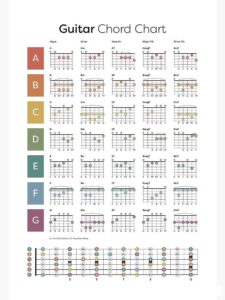Top tips for playing lead Guitar
Introduction:

Do you dream of shredding solos, captivating audiences, and becoming a legendary lead guitarist? Well, you’re in luck! While it may seem like an intimidating task, becoming a great lead guitarist is within your reach with the right guidance and practice. In this blog post, we’ll break down the steps to help you embark on your journey to becoming a remarkable lead guitarist.
Step 1: Start with the Basics
Every great guitarist began their journey by learning the basics. Start by familiarizing yourself with the anatomy of the guitar, understanding how to hold it properly, and learning the names of the strings. Next, learn basic chords and scales. Practice them diligently to build a solid foundation for your lead guitar skills.
Step 2: Master Techniques
To become a lead guitarist, you need to master essential techniques that will allow you to express yourself through your playing. Some key techniques to focus on include:
- Alternate Picking: This technique involves using a combination of downward and upward strokes to play fast and accurately.
- Hammer-ons and Pull-offs: These techniques create fluidity and enable you to play rapid sequences of notes smoothly.
- Bending: Bending strings adds emotion and expression to your playing. Practice bending to hit the desired pitch accurately.
- Vibrato: Vibrato brings life and character to your notes. Work on developing a controlled vibrato to enhance your sound.
Step 3: Learn from the Masters
Great lead guitarists draw inspiration from the masters who came before them. Explore the work of iconic guitarists across different genres such as blues, rock, jazz, and metal. Listen to their music, study their techniques, and try to incorporate their style into your playing. However, remember to develop your unique voice and style along the way.
Step 4: Study Music Theory
While it may not sound as exciting as shredding solos, understanding music theory is crucial for becoming a great lead guitarist. Learn about scales, modes, chord progressions, and how they relate to each other. This knowledge will allow you to improvise, compose your own music, and understand the music you play on a deeper level.
Step 5: Practice, Practice, Practice
Becoming a great lead guitarist requires dedication and practice. Set aside regular practice sessions and challenge yourself with exercises that target your weaknesses. Work on building speed, accuracy, and precision in your playing. Remember to practice with a metronome to improve your timing and rhythm.
Step 6: Play with Others
Playing with other musicians is an invaluable experience that helps you develop your skills further. Join a band or find fellow musicians to jam with. Collaborating with others will improve your ability to listen, adapt, and communicate musically. It’s also a great way to gain stage experience and learn from your peers.
Step 7: Perform and Seek Feedback
As you progress on your journey, seek opportunities to perform in front of an audience. Whether it’s an open mic night, a small gig, or even recording your own music, performing will help you grow as a lead guitarist. Embrace feedback from experienced musicians and listeners to identify areas for improvement and continue honing your skills.
What should I do after learning open chords?
1. Explore Barre Chords
2.Learn Basic Strumming Patterns
3.Dive into Power Chords
4.Develop Fingerpicking Techniques
5.Expand Your Music Theory Knowledge
6.Explore Different Genres
7.Start Learning Songs
8.Practice Regularly
Basic 4 chord to should learn first guitar
When starting out on guitar, it’s helpful to learn a few basic chords that are commonly used in many songs. Here are four essential chords that every beginner should learn:
- G Major (G): The G major chord is played by placing your second finger on the third fret of the sixth string (thickest string), your first finger on the second fret of the fifth string, and your third finger on the third fret of the second string. Strum all the strings except the sixth string.
- C Major (C): To play the C major chord, place your first finger on the first fret of the second string, your second finger on the second fret of the fourth string, and your third finger on the third fret of the fifth string. Strum from the fifth string downward, avoiding the sixth string.
- D Major (D): For the D major chord, place your first finger on the second fret of the third string, your third finger on the third fret of the second string, and your second finger on the second fret of the first string. Strum from the fourth string downward, avoiding the sixth string.
- E Minor (Em): The E minor chord is played by placing your second finger on the second fret of the fifth string and strumming all the strings except the sixth string. This chord uses the same finger positioning as the E major chord, but you don’t need to play the sixth string for the E minor.
With these four chords, you can play countless songs in various genres. Practice transitioning between them smoothly and strumming with a steady rhythm. As you become more comfortable, you can explore additional chords and progressions to expand your playing abilities. Enjoy your journey of learning guitar!
4 thoughts on “Becoming a Great Lead Guitarist: A Step-by-Step 10 Guide”